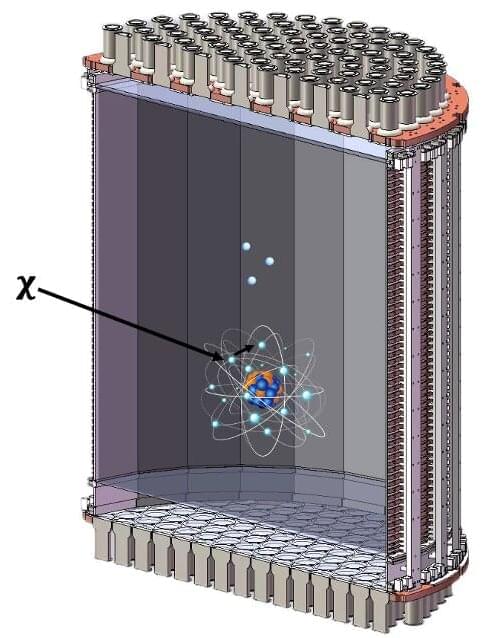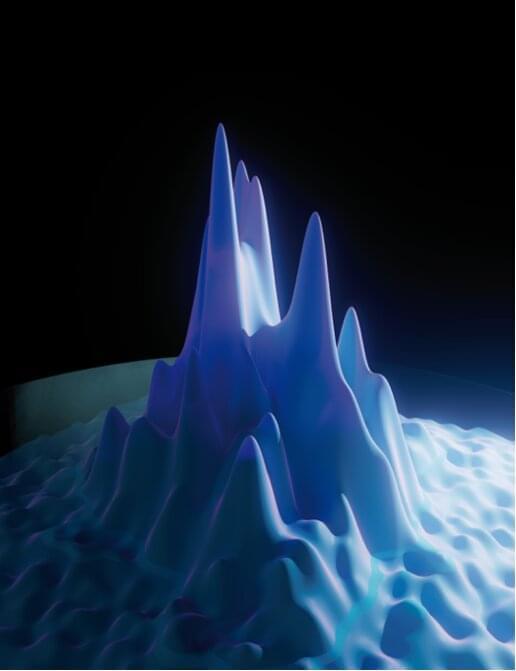Newton’s first law of motion says that particles move in straight lines unless influenced by a force but a new experiment shows that the quantum version of that assumption fails for quantum particles of light.


Newton’s first law of motion says that particles move in straight lines unless influenced by a force but a new experiment shows that the quantum version of that assumption fails for quantum particles of light.

The digital devices that we rely on so heavily in our day-to-day and professional lives today—smartphones, tablets, laptops, fitness trackers, etc.—use traditional computational technology. Traditional computers rely on a series of mathematical equations that use electrical impulses to encode information in a binary system of 1s and 0s. This information is transmitted through quantitative measurements called “bits.”
Unlike traditional computing, quantum computing relies on the principles of quantum theory, which address principles of matter and energy on an atomic and subatomic scale. With quantum computing, equations are no longer limited to 1s and 0s, but instead can transmit information in which particles exist in both states, the 1 and the 0, at the same time.
Quantum computing measures electrons or photons. These subatomic particles are known as quantum bits, or ” qubits.” The more qubits are used in a computational exercise, the more exponentially powerful the scope of the computation can be. Quantum computing has the potential to solve equations in a matter of minutes that would take traditional computers tens of thousands of years to work out.

Teams of physicists worldwide have been trying to detect dark matter, an elusive type of matter that does not emit, absorb, or reflect light. Due to its lack of interactions with electromagnetic forces, this matter is very difficult to observe directly, thus most researchers are instead searching for signals originating from its interactions with other particles in its surroundings.
The PandaX experiment is a research effort dedicated to the search of dark matter using data collected by the Particle and Astrophysical xenon detector, situated at the China Jinping Underground Laboratory (CJPL) in Sichuan, in China. In a recent paper published in Physical Review Letters, the researchers involved in this large-scale experiment published the results of their most recent search for light dark matter (i.e., weakly interacting massive particles with masses below 1 GeV).
“Currently, strong constraints exist for heavy mass dark matter candidates derived from null results in direct detection experiments using xenon detectors,” Yue Meng, Qing Lin and Ning Zhou told Tech Xplore, on behalf of the PandaX collaboration. “However, traditional searches are not sensitive to light mass dark matter (less than GeV/c2) due to the detection energy threshold. Using an ionization-only signal (S2-only) to search for light mass dark matter can reduce the energy threshold from ~1 keV to 0.1 keV. Previous S2-only data analyses in xenon detectors were unable to model the background, which prevented effective and sensitive searches for light mass dark matter.”

A new type of particle called the strange pentaquark has been found using the Large Hadron Collider. The particle could help researchers catalogue the states of exotic matter and figure out how fundamental particles stick together.
By Leah Crane

Originally developed nearly a century ago by physicists studying neutron diffusion, Monte Carlo simulations are mathematical models that use random numbers to simulate different kinds of events. As a simple example of how they work, imagine you have a pair of six-sided dice, and you’d like to determine the probability of the dice landing on any given number.
“You take your dice, and you repeat the same exercise of throwing them on the table, and you look at the outcome,” says Susanna Guatelli, associate professor of physics at the University of Wollongong in Australia.
By repeating the dice-throwing experiment and recording the number of times your dice land on each number, you can build a “probability distribution”—a list giving you the likelihood your dice will land on each possible outcome.
Australia-based Q-CTRL has officially announced that it will partner with the Australian military and AUKUS to develop GPS-free navigation using quantum sensors.
Australian quantum technology developer Q-CTRL has now officially partnered with Australia’s Department of Defence (DoD) and, by proxy, AUKUS partners to develop quantum sensors that will deliver quantum-assured navigation capability for military platforms. The program will use Q-CTRL’s “software-ruggedized” quantum sensing technology to enhance positioning and navigation.
Q-CTRL
Navigating using atoms.

Experts from CERN, DESY, IBM Quantum and others have published a white paper identifying activities in particle physics that could benefit from the application of quantum-computing technologies.
Last week, researchers published an important white paper identifying activities in particle physics where burgeoning quantum-computing technologies could be applied. The paper, authored by experts from CERN, DESY, IBM Quantum and over 30 other organizations, is now available as a preprint on arXiv.
With quantum-computing technologies rapidly improving, the paper sets out where they could be applied within particle physics in order to help tackle computing challenges related not only to the Large Hadron Collider’s ambitious upgrade program, but also to other colliders and low-energy experiments worldwide.

Over the past decades, physicists and engineers have been trying to develop various technologies that leverage quantum mechanical effects, including quantum microscopes. These are microscopy tools that can be used to study the properties of quantum particles and quantum states in depth.
Researchers at Silicon Quantum Computing (SQC)/UNSW Sydney and the University of Melbourne recently created a new solid-state quantum microscope that could be used to control and examine the wave functions of atomic qubits in silicon. This microscope, introduced in a paper published in Nature Electronics, was created combining two different techniques, known as ion implantation and atomic precision lithography.
“Qubit device operations often rely on shifting and overlapping the qubit wave functions, which relate to the spatial distribution of the electrons at play, so a comprehensive knowledge of the latter provides a unique insight into building quantum circuits efficiently,” Benoit Voisin and Sven Rogge, two researchers who carried out the study, told Phys.org.

Footage of thousands of tiny metal spheres set jiggling in a shallow tray has revealed an arrangement of particles once considered impossible.
A team of physicists from the University of Paris-Saclay in France has observed an unusual combination of order and chaos known as a ‘quasicrystal’ emerging spontaneously in a granular material on a millimeter-scale for the first time.
If there is beauty in order, crystals are the very manifestation of elegance and attraction.
AI had its nuclear bomb threshold. The biggest thing that happens to human technology maybe since the splitting of the atom.
A conversation with Science Fiction author and a NASA consultant David Brin about the existential risks of AI and what approach we can take to address these risks.
David Brin’s advice for new authors.
http://www.davidbrin.com/advice.htm.
David Brin’s new WIRED article appraises the chances (nil) of an ‘AI moratorium.’ It then breaks down the three standard ‘AI-formats’ implicitly assumed by almost everyone in the field – corporate puppet, invasive blob, or ‘Skynet’. Formats that can only lead to disaster.
He propose instead a 4th — that AI entities just might be held accountable if they have individuality… even ‘soul’… https://www.wired.com/story/give-ever… Brin’s related NEWSWEEK op-ed (June’22) dealt with ‘empathy bots” that feign sapience. https://www.newsweek.com/soon-humanit… Here also is a YouTube pod where I give an expanded version: • AI is Alive! Or i… Here’s how all those fervid calls for an “AI moratorium” are doomed to fail. https://davidbrin.blogspot.com/2023/0… David Brin’s website http://www.davidbrin.com David Brin latest book VIVID TOMORROWS: Science Fiction and Hollywood — http://www.davidbrin.com/vividtomorro… David Brin’s blog (Contrary Brin blog) http://davidbrin.blogspot.com/ Links: Quora blog: https://spacefaringcivilization.quora… Amazon Author page: http://amazon.com/author/ronfriedman My Website: https://ronsfriedman.wordpress.com/ Subscribe to my mailing list: https://ronsfriedman.wordpress.com/su… How to support the channel: Get $5 in NDAX (Canadian Crypto Exchange): https://refer.ndax.io/vm1j Buy Escape Velocity short stories collection: Support with Ethereum or Plygon donation: sciandscifi.nft.
https://www.wired.com/story/give-every-ai-a-soul-or-else/
David Brin’s related NEWSWEEK op-ed (June’22) dealt with ‘empathy bots” that feign sapience.